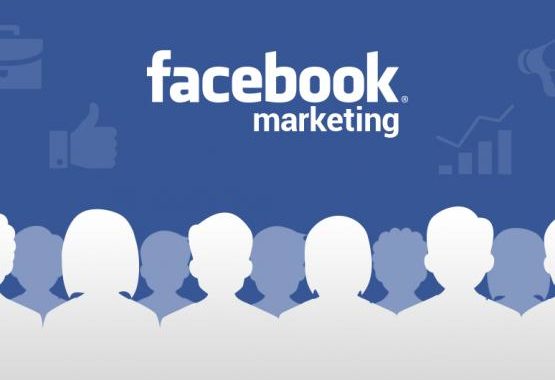
How to Improve Your Facebook Ads ROI
It’s becoming increasingly difficult to get much organic reach for your Facebook Pages. As a result, many businesses have turned to Facebook Ads to ensure that they reach the right audience.
Facebook Ads is also hailed as the much cheaper and all-around better cousin of Google Adwords, but is that always the case?
It’s expected that by the middle of this year, Facebook will begin running out of places to show ads. For advertisers that means it’s going to become more costly to put your ads on the social network.
For that reason, it’s becoming even more important to get a decent Facebook Ads ROI. Which is why I’m here today to show you exactly how to do that.
1. Target Audience
For me, your target audience is one of the most important parts of your ad campaign. Yet time and time again, it’s one of the biggest mistakes people make on Facebook.
So how you can use your target audience to improve your Facebook ads ROI?
Your campaign may already be getting conversions, so why would you bother tweaking the target audience if it’s working?
In the same way that your Adwords campaigns will have keywords that don’t convert, Facebook will have sections of your audience that don’t convert.
After you’ve started running a campaign, Facebook lets you view the gender, age and location of the people the ad reached. However, if you wanted to identify the interests of these people, you can’t. That’s why from the start of your campaign, you should break out your audience into multiple segments.
Let’s say your overall target audience is Stay At Home Moms in the US. There are multiple ways that we can segment this.
- We could break it out geographically, to see which states are more likely to convert.
- We could look at the type of parent they are, whether they’re expecting, new parents, teenage parents and so on.
- There are countless other ways we could break this out (age, interests, behavior) so it’s completely up to yourself how you do it.
Use the same ad for each segment. When you’ve gathered enough data, you can start to exclude the segments that aren’t cost effective.
Another tactic that can drastically reduce your cost per acquisition is to use what you’ve got - your existing audience. Too many businesses don’t utilize this audience despite being the most cost-effective one you have. It takes too much time and resources to engage with people who have never come across your business before.
Your current visitors or customers are people who you know have an interest in your business. You don’t need to educate them on who you are, you can simply concentrate on the ask.
So who is your existing audience?
It’s your Facebook page followers, your website visitors, your email subscribers. And better yet it’s so simple to create this audience on Facebook. Install the Facebook Pixel on your website and you can start to capture your existing audience. If you have an email list, simply import the list of emails to Facebook and it will match the emails with Facebook users.
That’s all it takes.
One of the great things about importing your audience to Facebook is that it also opens the doors to better targeting of new customers. Facebook Ads allows you to create Lookalike audiences, which is where they look at your website visitors and identify other Facebook Users that have similar interests. Essentially they ‘look like’ your audience.
These audiences are then much more likely to convert than the broad audience you created based on interests you think your potential customers have.
2. A/B Testing
In a way, some of what we mentioned in the previous step about target audiences is considered A/B testing. By segmenting your audience you’re essentially testing which one works the best.
If you’ve come across A/B testing before, the concept of it is pretty simple. You test version A against version B and see which one gets the best results. This tactic famously netted Obama a whopping $60 million in donations by testing different images and CTAs.
With Facebook Ads there’s a ton of other variables you can test too.
Technically you could have an exponential number of tests running at any one time. But according to AdEspresso, these are the areas you should focus on:
Ads Design
- Image
- Post Text
- Placement (where your ads are displayed)
- Landing Page
- Headline
Ads Targeting
- Country
- Gender
- Interests
- Age
- Custom Audiences
- Relationship Status
- Purchase Behaviors
- Education Level
Others:
- Ad Type
- Bidding (oCPM, CPC, CPM)
- oCPM Optimization (Clicks, Conversions, Engagement)
That seems like a lot, so if you’re on a small budget I’d recommend choosing only one or two of these elements to test at a time. You’ll need to create an ad for each iteration of your test, so with 6 elements you’d have 36 variations - that’s quite a lot!
It can also be very easy to lose track of all the ads that you’ve created, so check out this guide on A/B Testing Facebook Ads by Conversion XL.
3. Track the right metrics
Now this sounds like it might not have a direct impact on your Facebook ads ROI but trust me, it can have a huge effect.
My day to day job is to work with businesses and help them make better business decisions. I’ve worked with enough businesses to know how tracking the wrong metrics can ruin a campaign.
Following the wrong metrics on Facebook Ads could mean you’re chasing the wrong result. You think you’re performing well but actually, it’s getting the wrong results.
One of the biggest culprits of this is the ‘Results’ column in Ads Manager. Facebook’s version of the total number of conversions is a little different to yours. According to this Facebook Help Team response, Total Conversions includes different types of conversions.
For example, a campaign I’m running shows that I have 406 conversions, which at first makes me super happy! However, when I drill down into it, I actually have 4 different conversions:
- 12 people added to their basket,
- 5 Initiated the Checkout,
- 379 viewed content,
- 10 Purchases.
What I originally thought was a hugely successful campaign, actually only had 10 conversions. The lesson here is not to use the default report in Facebook, customize it to make sure you’re getting the right stats.
Tracking the right metrics can also help you save a poor campaign.
Ed Leake recommends tracking the following three metrics:
- CPA
- CTR (Click Through Rate)
- Frequency
The first two might seem obvious as to why you’d track them. Cost Per Acquisition is how you keep your costs low and increasing your Click Through Rate means more people are choosing your ads.
For me, frequency is the key one to look at. Frequency tells you how many times your target audience has seen your ad. What’s key here is that the closer you get to 10, the less likely people are to click which of course decreases your Facebook ads ROI.
As soon as your ads begin to reach that figure of 10, freshen up your Ads. Give them a new image, new copy and you don’t waste any of your budget. (Even better if you can use some of the knowledge from your A/B tests to create the new ads.)
4. Have a clear idea of where your ad sits in the customer journey
So in the first tip, we talked about how targeting your existing customers can drastically reduce your Return on Investment. These customers require little education about your business, so you can usually get them to convert pretty quickly.
However what if you need to target new customers?
If you’re taking my advice on creating a lookalike audience, there’ll still be an element of education required before you can convert potential customers.
Throwing a single ad at these customers simply won’t work and your Facebook ads ROI will drop. Typically reports suggest that you need 6-9 touchpoints with a brand before conversion.
So, you need to consider how you can create a funnel that will push the audience to convert and how Facebook Ads will sit within that funnel.
One of the best examples of this that I’ve seen is Ed Leake’s B2B funnel for Midas Media. You can hear Ed talk more about that below, but he’s created a funnel that allows him to qualify leads and reduce his Facebook ads ROI.
Ed first shares his content on Facebook. The example he gives is a post about upcoming changes to Adwords. People who click to view that post will then see a ‘more action orientated piece’ in an ad, in this case, a PPC Guide.
The people who view this guide obviously have a clear interest in PPC and could potentially require a PPC agency, so the next ad is a guide including case studies and pricing from Midas Media.
If those people then search for PPC services on Google, Ed’s ad will appear to capture that conversion.
You can see how after repeatedly seeing his brand on Facebook, they’d be more inclined to choose the Midas Media link. What’s more, as Ed mentions in his video, typical CPC for PPC agency terms are around £15 - £30 but using this technique, they’ve reduced their costs to £2 - £3 — a huge reduction.
In Ed’s funnel, Facebook is being used primarily as tool to qualify potential leads. Only once they’ve been qualified in each step will they then attempt to convert them on Google Ads.
Ed has a clear understanding of where he’s using Facebook Ads within his funnel and what he wants them to achieve.
Ryan Stewart covers a similar strategy over on Moz, accept it’s all completed on Facebook.
So to recap, there are 4 ways you can increase your Return on Investment:
- Target the right customers
- Test your audiences and ad creative
- Track the right metrics to make sure you’re making the right decisions
- Know what your customer journey looks like and where Facebook Ads sits within that.
Utilizing just one of those steps will increase your Return on Investment and ensure the Facebook Ads is a worthwhile channel for your business.
Author BIO:
Sarah Hewitson is the Community and Marketing Manager at neatly.io. She spends her time helping neatly users get better access to their data and understand what it’s telling them.




